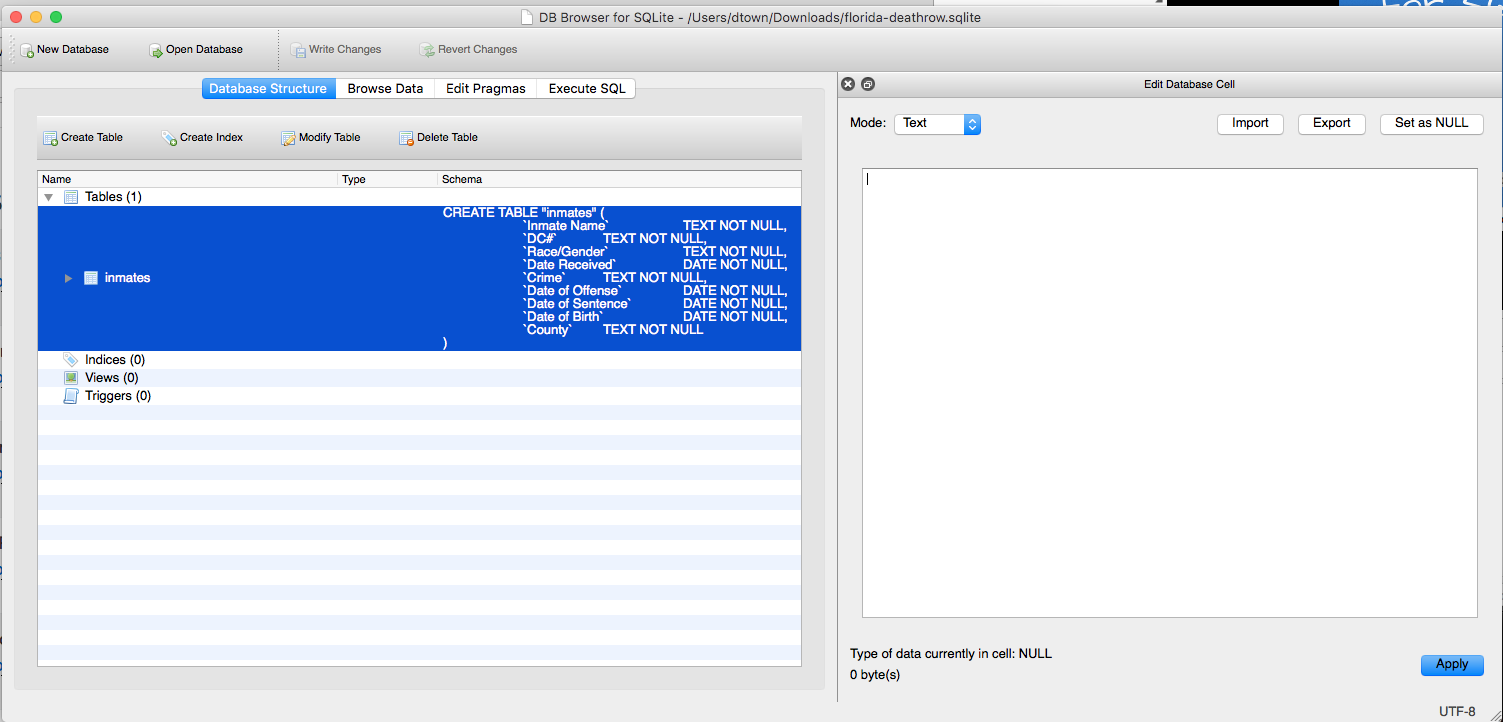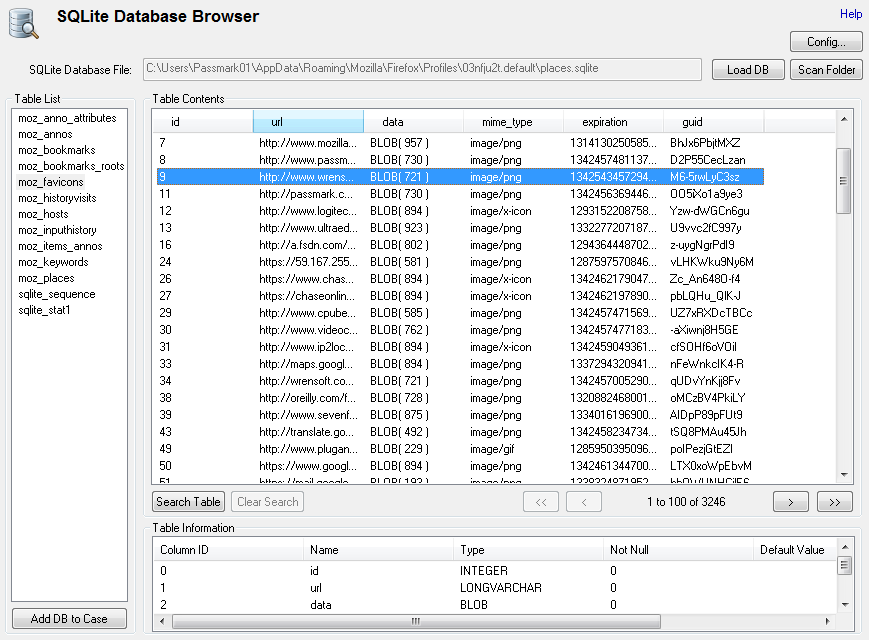

So even though it is not directly visible, the parser is a very important part of the application. Especially editing the schema but also to some extent modifying the contents of the table will not be possible. The parser is not perfect and when failing to parse a certain table or index schema, you will not be able to use all features of DB4S on that table or index. New SQL parser with Unicode support and better coverage in generalĭB4S comes with a SQL parser which is used to analyse the tables schemas. Holding the Ctrl / cmd key and clicking a column header which is already in the list of columns for sorting changes the sort order of that column.Īll the columns used for sorting are stored in your project files. To add another sort key hold the Ctrl / cmd key while clicking the column header. Simply clicking a column header resets any old sort orders and sorts by just the clicked column. Their order will appear in the column headers. You can configure any number of sort keys. It is now possible to sort by multiple columns in the Browse Data tab. But no worries: Whenever you try to start a second query, a message box will inform you and let you decide whether to cancel or wait for the other process to finish. In the status bar, you are now notified of any long-running processes and you can cancel them too. Because we want to make sure that it is impossible to corrupt a database file, DB4S does not allow two queries or one query and another long-running process to run simultaneously. SQLite does not support accessing the database from multiple threads simultaneously for all database configurations. For long-running queries, this makes a huge difference because it allows you to cancel the query anytime. This means the UI can respond while the query is running. SQL queries are now running in a separate thread. for presentations or printing.īetter threading and cancelling support for long-running queries This allows you to format the table contents just like a table in your favourite spreadsheet application, e.g. Your configured conditional formats are saved to your project files as well.Īdditionally there is a new format toolbar which allows you to set formats arbitrarily without giving any condition. If you are currently filtering the view, you can also right-click the filter bar and click 'Use for Conditional Format' to quickly add a conditional format for the current filter condition. To set a conditional format you can right-click a cell or right-click a filter bar, then click 'Edit Conditional Formats.' to open the dialog. equals, does not equal, less than, more than, LIKE, etc. Conditional formats can select for anything that can be filtered for, e.g. It works very similarly to what you might know from your spreadsheet application.Ĭonditional formats are set per column and multiple formats can be configured for each column.

With this, you can set colours, font, font size, text alignment, and more depending on the values of the cell. We have added a new feature for configuring conditional formats in the Browse Data tab. This allows you to add and edit constraints for multiple columns but it is also useful for setting constraint names or just getting an overview of all constraints in the table. We have also added a new constraint editor. This should make editing the schema of large tables a lot faster.

With this release DB4S keeps track of all your modifications, only applying them in one single process when clicking the OK button. Before each of these modifications would be carried out immediately which, for large tables, makes editing them very slow and tiresome. For example, when renaming a column you might want to edit its data type or default value too. Often you do not edit just one bit of your table schema.
#DB BROWSER FOR SQLITE FILE TYPES FULL#
This gives you the full ALTER TABLE support we offer but additionally, all the benefits just mentioned. Starting with this release DB4S makes as much use of this new feature as possible.
#DB BROWSER FOR SQLITE FILE TYPES UPDATE#
This does not only make renaming columns a lot faster, it makes it safer too because the new process is less prone to errors and also makes sure to update all references to the renamed column in your indices and triggers. SQLite 3.25.0 added support for renaming columns with the ALTER TABLE command (previously you had to create a new table with the renamed column, copy all data over, delete the old table, then rename the new table - even leaving out some details of the process here.).


 0 kommentar(er)
0 kommentar(er)
